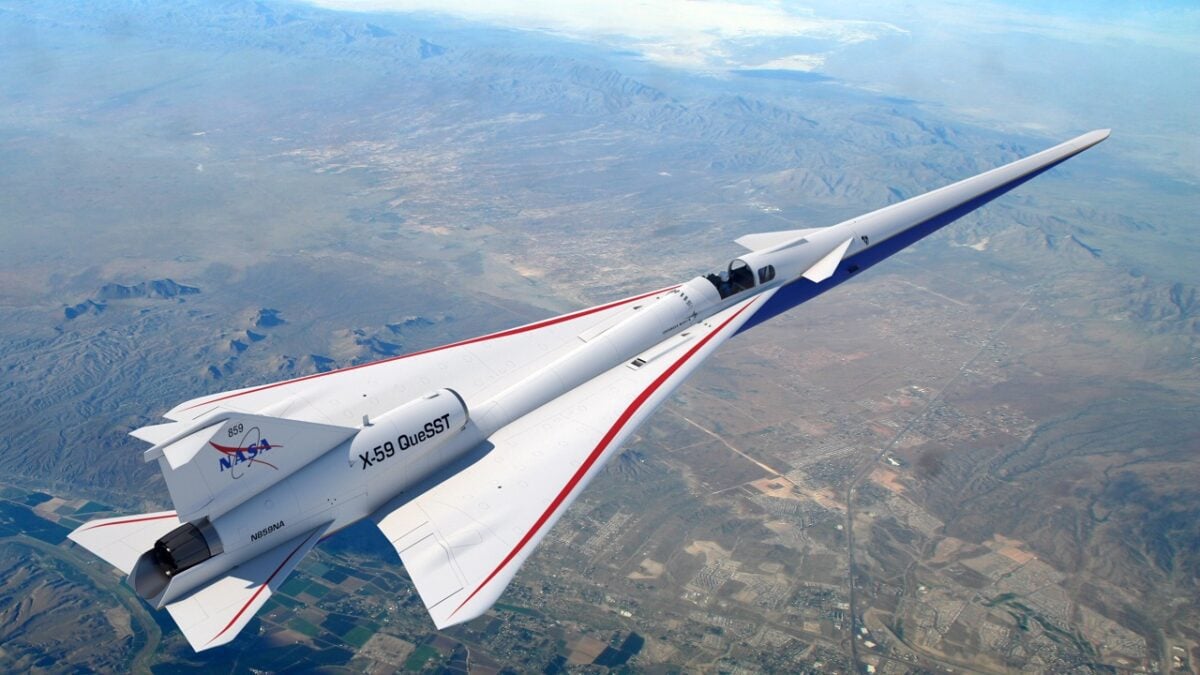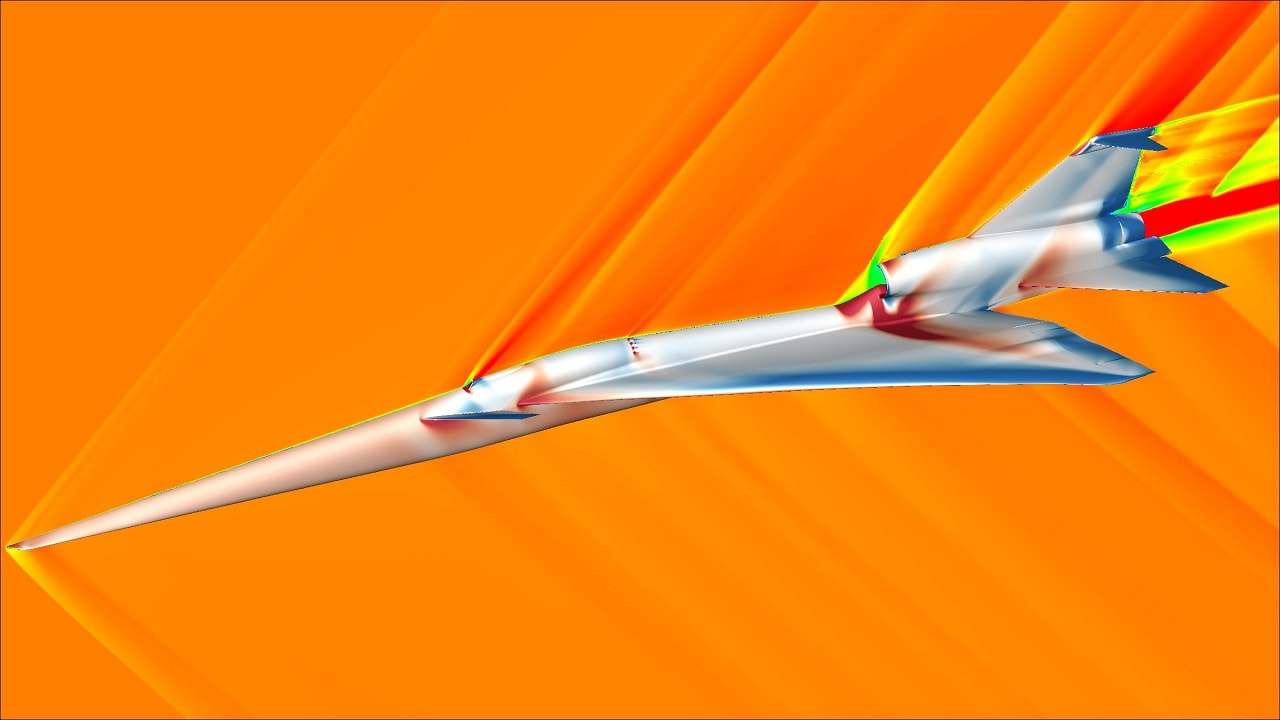This week, NASA’s X-59 Quiet SuperSonic Technology (QueSST) research aircraft returned to Lockheed Martin Skunk Works facility in Palmdale, California, after it had completed a series of ground tests in Fort Worth, Texas. The experimental aircraft was developed by Lockheed Martin as part of NASA’s low-boom flight demonstration mission, which will test technology designed to reduce the typically loud sonic boom that occurs when an aircraft that flies at supersonic speeds to a gentle thump that is heard by people on the ground.
The advanced X-plane will begin to conduct flights over communities around the U.S. starting in 2024. NASA’s goal is to collect and provide data to U.S. regulators to help establish an acceptable commercial supersonic noise standard, and to lift the ban on commercial supersonic travel over land, which could reduce cross-country flight times drastically.
X-59 Ground Tests
During its recent time at Lockheed Martin’s Texas facility, structural and fuel calibration tests were completed on the aircraft in preparation for final integration and taxi testing back in Palmdale.
The latest ground tests on the X-59 were conducted to ensure the aircraft’s ability to withstand the loads and stresses of supersonic flight – or flight at speeds faster than Mach 1. During the tests, the X-59’s fuel systems were also calibrated and tested at Lockheed Martin’s Ft. Worth facilities. Since the airplane wasn’t actually flying, tests were conducted with the aircraft sitting on hydraulic jacks that are connected directly with the structure
In addition, because the aircraft couldn’t fly to the facilities, there had been logistical challenges just to complete the tests. While the aircraft was built in California, it had to be shipped by truck to Texas in December.
“Our Texas site has existing facilities to perform the kinds of tests needed. It would have been expensive and time consuming to design and build them from scratch in Palmdale. But in Fort Worth they’ve got the perfect facility with a full control room and all the support equipment needed to do those tests very efficiently,” explained Mike Buonanno, one of Lockheed Martin’s aerospace engineers who is involved in the program.
The ground tests were then completed at the aerospace giant’s Fort Worth facility, the same one where the F-16 Fighting Falcon was built for many years. Test equipment for that aircraft is still available, yet needed some modifications to handle the X-59’s longer nose compared to the F-16. As one of the more recognizable features of the X-59, the aircraft’s nose makes up almost a third of the airframe’s length and will be essential in shaping shock waves during supersonic flight, resulting in quiet sonic thumps instead of loud sonic booms.

X-59. Image Credit: NASA.
“Our folks in Fort Worth were able to hit the ground running from the moment the airplane arrived from Palmdale,” Buonanno continued.
Now with its return to California, the X-59 will undergo further ground tests as it approaches full completion of its development and continues to make progress on its way to its first flight.
Now a Senior Editor for 1945, Peter Suciu is a Michigan-based writer who has contributed to more than four dozen magazines, newspapers and websites. He regularly writes about military hardware, and is the author of several books on military headgear including A Gallery of Military Headdress, which is available on Amazon.com. Peter is also a Contributing Writer for Forbes.

